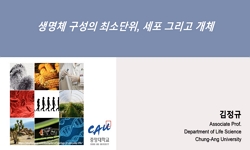This study was investigated to identify the regulatory mechanism of ACC gene expression by hormones and nutrition. The fragment of ACC promoter I (PI) -220 bp region was recombined to pGL3-Basic vector with luciferase as a reporter gene. The primary h...
http://chineseinput.net/에서 pinyin(병음)방식으로 중국어를 변환할 수 있습니다.
변환된 중국어를 복사하여 사용하시면 됩니다.
- 中文 을 입력하시려면 zhongwen을 입력하시고 space를누르시면됩니다.
- 北京 을 입력하시려면 beijing을 입력하시고 space를 누르시면 됩니다.
https://www.riss.kr/link?id=A104497604
- 저자
- 발행기관
- 학술지명
- 권호사항
-
발행연도
2003
-
작성언어
English
- 주제어
-
등재정보
KCI등재후보,SCOPUS,ESCI
-
자료형태
학술저널
-
수록면
61-65(5쪽)
-
KCI 피인용횟수
1
- 제공처
-
0
상세조회 -
0
다운로드
부가정보
다국어 초록 (Multilingual Abstract)
This study was investigated to identify the regulatory mechanism of ACC gene expression by hormones and nutrition. The fragment of ACC promoter I (PI) -220 bp region was recombined to pGL3-Basic vector with luciferase as a reporter gene. The primary hepatocyte from the rat was used to investigate the regulation of ACC PI activity. ACC PI (-220 bp)/luciferase chimeric plasmid was transfected into primary rat hepatocyte by using lipofectin. ACC PI activity was shown by measuring luciferase activity. The addition of insulin, dexamethasone, and triiodothyronine to the culture medium increased the activity of ACC PI by 2.5-, 2.3- and 1.8-fold, respectively. In the presence of 1 M dexamethasone, the effects of insulin was amplified about 1.2-fold showing the additional effects of dexamethasone. Moreover the activity of luciferase was increased by insulin, dexamethasone, and triiodothyronine treatment approximately 4-fold. These results indicated that insulin, dexamethasone and thyroid hormone coordinately regulate ACC gene expression via regulation of promoter I activity. On the -220 to +21 region of ACC PI, the addition of the glucose to the culture medium increased the activity of ACC PI. With 25 mM glucose, luciferase activity increased by 7-fold. On the other hand, on the -220 bp region, ACC PI activity was not changed by polyunsaturated fatty acids. Therefore, it can be postulated that there are response elements for insulin, triiodothyronine, dexamethasone, and glucose, but not PUFAs on the -220 bp region of ACC PI.
다국어 초록 (Multilingual Abstract)
This study was investigated to identify the regulatory mechanism of ACC gene expression by hormones and nutrition. The fragment of ACC promoter I (PI) -220 bp region was recombined to pGL3-Basic vector with luciferase as a reporter gene. The primary h...
This study was investigated to identify the regulatory mechanism of ACC gene expression by hormones and nutrition. The fragment of ACC promoter I (PI) -220 bp region was recombined to pGL3-Basic vector with luciferase as a reporter gene. The primary hepatocyte from the rat was used to investigate the regulation of ACC PI activity. ACC PI (-220 bp)/luciferase chimeric plasmid was transfected into primary rat hepatocyte by using lipofectin. ACC PI activity was shown by measuring luciferase activity. The addition of insulin, dexamethasone, and triiodothyronine to the culture medium increased the activity of ACC PI by 2.5-, 2.3- and 1.8-fold, respectively. In the presence of 1 μM dexamethasone, the effects of insulin was amplified about 1.2-fold showing the additional effects of dexamethasone. Moreover the activity of luciferase was increased by insulin, dexamethasone, and triiodothyronine treatment approximately 4-fold. These results indicated that insulin, dexamethasone and thyroid hormone coordinately regulate ACC gene expression via regulation of promoter I activity. On the -220 to +21 region of ACC PI, the addition of the glucose to the culture medium increased the activity of ACC PI. With 25 mM glucose, luciferase activity increased by 7-fold. On the other hand, on the -220 bp region, ACC PI activity was not changed by polyunsaturated fatty acids. Therefore, it can be postulated that there are response elements for insulin, triiodothyronine, dexamethasone, and glucose, but not PUFAs on the -220 bp region of ACC PI.
동일학술지(권/호) 다른 논문
-
(+) - Catechin is a Potent Inhibitor of Intestinal Absorption of Cholesterol in Rats
- 한국식품영양과학회
- Sang K. Noh
- 2003
- KCI등재후보,SCOPUS,ESCI
-
Immunosuppressive Effect of the Intraperitonially Injected Pine Needle Distillate in Mice
- 한국식품영양과학회
- Young-Jin Chung
- 2003
- KCI등재후보,SCOPUS,ESCI
-
- 한국식품영양과학회
- Hye-Kyung Kim
- 2003
- KCI등재후보,SCOPUS,ESCI
-
- 한국식품영양과학회
- Mi-Ja Chung
- 2003
- KCI등재후보,SCOPUS,ESCI
분석정보
인용정보 인용지수 설명보기
학술지 이력
| 연월일 | 이력구분 | 이력상세 | 등재구분 |
|---|---|---|---|
| 2023 | 평가예정 | 해외DB학술지평가 신청대상 (해외등재 학술지 평가) | |
| 2020-01-01 | 평가 | 등재학술지 유지 (해외등재 학술지 평가) |  |
| 2014-06-24 | 학회명변경 | 한글명 : 한국식품영양과학회지 -> 한국식품영양과학회영문명 : Journal of the Korean Society of Food Science and Nutrition -> The Korean Society of Food Science and Nutrition |  |
| 2014-04-02 | 학회명변경 | 한글명 : 한국식품영양과학회 -> 한국식품영양과학회지영문명 : 미등록 -> Journal of the Korean Society of Food Science and Nutrition |  |
| 2013-10-01 | 평가 | SCOPUS 등재 (등재유지) |  |
| 2012-04-06 | 학술지명변경 | 한글명 : Journal of Food Science and Nutrition -> Preventive Nutrition and Food Science외국어명 : Journal of Food Science and Nutrition -> Preventive Nutrition and Food Science |  |
| 2011-01-01 | 평가 | 등재 1차 FAIL (등재유지) |  |
| 2009-01-01 | 평가 | 등재학술지 유지 (등재유지) |  |
| 2007-01-01 | 평가 | 등재학술지 유지 (등재유지) |  |
| 2004-01-01 | 평가 | 등재학술지 선정 (등재후보2차) |  |
| 2003-01-01 | 평가 | 등재후보 1차 PASS (등재후보1차) |  |
| 2002-01-01 | 평가 | 등재후보학술지 유지 (등재후보1차) |  |
| 2001-07-01 | 평가 | 등재후보학술지 선정 (신규평가) |  |
학술지 인용정보
| 기준연도 | WOS-KCI 통합IF(2년) | KCIF(2년) | KCIF(3년) |
|---|---|---|---|
| 2016 | 0.28 | 0.28 | 0.26 |
| KCIF(4년) | KCIF(5년) | 중심성지수(3년) | 즉시성지수 |
| 0.29 | 0.28 | 0.499 | 0.02 |






 KCI
KCI






